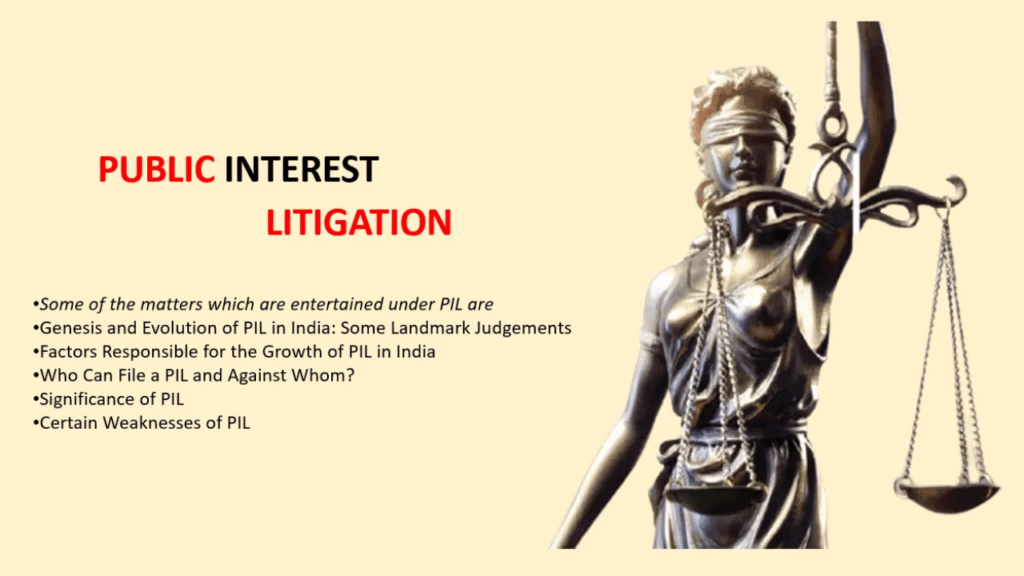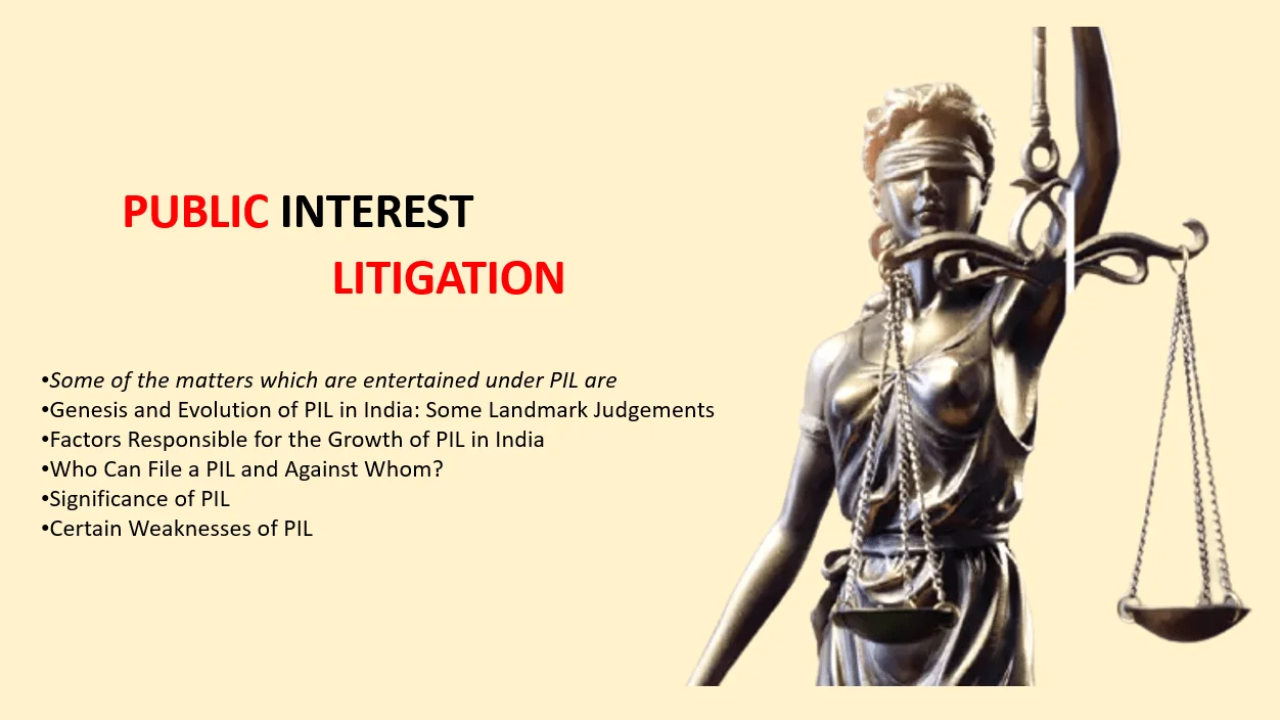
Environmental challenges such as deforestation, air and water pollution, biodiversity loss, and climate change have grown rapidly in India due to industrialization and urbanization. Traditional legal mechanisms often failed to address these concerns effectively, leaving citizens and communities without adequate remedies. Against this backdrop, Public Interest Litigation (PIL) has emerged as a transformative tool in securing environmental justice. Through PILs, ordinary citizens, activists, and organizations can approach the higher judiciary to protect collective environmental rights, even if they are not directly affected by the issue.
The Emergence of PIL in India
PIL was introduced in India during the late 1970s and 1980s, when the Supreme Court adopted a liberal interpretation of locus standi. This allowed any public-spirited person or organization to file a petition on behalf of those whose rights were violated but who could not approach the court themselves.
In environmental matters, PILs became a powerful tool because:
- Environmental degradation affects entire communities, not just individuals.
- Poor and marginalized groups often lack access to courts.
- It ensures judicial intervention when executive or legislative action is absent or inadequate.
PIL and Environmental Protection
PILs have been used extensively in India to challenge projects, demand stricter regulation, and enforce environmental laws. The judiciary, through PILs, has expanded the interpretation of Article 21 of the Constitution—the right to life—to include the right to a clean and healthy environment.
Key Contributions of PIL in Environmental Justice
1. Recognition of Environmental Rights
Through PILs, the judiciary declared that the right to life includes the right to pollution-free air, safe drinking water, and ecological balance.
2. Strengthening Environmental Governance
PILs compelled government agencies to implement existing laws such as the Water Act, Air Act, and Environmental Protection Act, thereby improving enforcement.
3. Development of Environmental Principles
The Supreme Court applied global doctrines such as:
- Polluter Pays Principle
- Precautionary Principle
- Public Trust Doctrine
4. Judicial Monitoring of Projects
PILs have allowed courts to monitor large infrastructure projects, mining activities, and industries that pose risks to the environment.
5. Public Awareness and Participation
By bringing environmental issues into courtrooms and media debates, PILs have created greater public consciousness about sustainability.
Landmark PIL Cases in Environmental Justice
- M.C. Mehta v. Union of India (Oleum Gas Leak Case, 1986): Introduced the principle of absolute liability for hazardous industries.
- Ganga Pollution Case (1985): Directed closure of tanneries polluting the Ganga River.
- T.N. Godavarman v. Union of India (1996): Expanded the definition of forests and restricted deforestation.
- Vellore Citizens Welfare Forum v. Union of India (1996): Introduced the concept of sustainable development in Indian law.
- M.C. Mehta v. Union of India (Vehicular Pollution, Delhi): Ordered conversion of public transport to CNG to curb air pollution.
Strengths of PIL in Environmental Justice
- Provides access to justice for marginalized communities.
- Ensures accountability of government agencies and industries.
- Promotes judicial activism in areas where policies are weak.
- Enables preventive action against potential ecological harm.
- Empowers civil society participation in governance.
Challenges in Using PIL for Environmental Protection
While PILs have played a transformative role, they also face challenges:
- Judicial Overreach: Excessive intervention in policy-making can blur separation of powers.
- Delay in Implementation: Orders passed in PILs often face hurdles in enforcement by state agencies.
- Misuse of PILs: Sometimes PILs are filed for private interests or to stall development projects.
- Resource Constraints: Courts may lack technical expertise to evaluate complex environmental issues.
Impact of PIL on Environmental Governance
PIL has fundamentally changed the landscape of environmental governance in India. By expanding legal standing, incorporating environmental principles into judgments, and holding authorities accountable, PILs have:
- Strengthened the rule of law in environmental matters.
- Encouraged adoption of eco-friendly policies.
- Established India as a global example of using judicial mechanisms for environmental protection.
Overview Table
| Aspect | Contribution of PIL | Impact on Environmental Governance |
|---|---|---|
| Access to Justice | Allows citizens/NGOs to file cases | Broader participation in protecting environment |
| Constitutional Recognition | Expanded Article 21 to include clean environment | Right to healthy environment as fundamental right |
| Environmental Principles | Polluter Pays, Precautionary, Public Trust | Strengthened legal framework for sustainability |
| Judicial Monitoring | Oversight on industries and projects | Ensured compliance and accountability |
| Landmark Cases | Oleum Gas Leak, Ganga Pollution, CNG ruling | Set precedents for future environmental law |
| Challenges | Misuse, delays, enforcement issues | Need for balance between justice and governance |
FAQs
Q1. How has PIL strengthened environmental protection in India?
PIL has expanded the right to life to include the right to a clean environment and compelled authorities to enforce environmental laws.
Q2. Which are the most important environmental principles applied in PIL cases?
The Polluter Pays Principle, Precautionary Principle, and Public Trust Doctrine are widely applied.
Q3. Why is PIL significant for marginalized communities in environmental cases?
It allows concerned citizens and organizations to approach courts on their behalf, ensuring access to justice.

